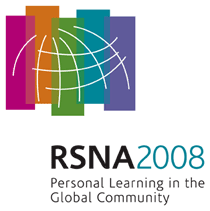
Abstract Archives of the RSNA, 2008
SSE02-01
Patterns of Care Study: Breast Cancer Screening and Diagnostic Mammography in the Commonwealth of Pennsylvania (PCS/PA)—Radiologists and Facilities
Scientific Papers
Presented on December 1, 2008
Presented as part of SSE02: Breast Imaging (Mammography)
Catherine W Piccoli, Presenter: Speakers Bureau, Bracco Group
Jean B Owen PhD, Abstract Co-Author: Nothing to Disclose
Rebecca S. Lewis MPH, Abstract Co-Author: Nothing to Disclose
To evaluate variability in breast imaging services in Pennsylvania (PA).
As part of PCS/PA, two questionnaires were sent to a sample of PA radiologists and to all breast imaging (BI) facilities in PA to determine facility ownership, affiliations, number and type of BI procedures, equipment, staffing and record-keeping practices. Responses from 70 clinically active radiologists and from 303 of 398 facilities were obtained. This work was supported by the Pennsylvania Department of Health, Tobacco Settlement Act 77-201, Commonwealth Universal Research Enhancement (C.U.R.E.) program.
12% of radiologists spent ≥30% of their time and 4% spent ≥ 50% of their time in mammography. No radiologists responding had breast fellowship training. The weighted percentiles of all radiologists reading any mammography was 53%. By age group, weighted percentiles of radiologists reading mammography was 32% aged <45, 58% aged 45-54, 91% aged 55-64 and 32% aged ≥ 65. The mean number of mammograms per year read by all radiologists was 2757. Highest mean number of mammograms per year was in the ≥ 65 age group (5349). Of 297 facilities, 63% had 1 mammography unit, 23% had 2 units, 10% had 3 units and 4% had ≥ 4 units. 233 facilities were designated urban and 64 rural. Urban facilities were more likely to be freestanding (6% vs 0%), part of a general radiology office (22% vs 5%), affiliated with a medical school (17% vs 6%) or residency program (25% vs 16%). Rural facilities were more likely to be based in a hospital (80% vs 60%) or primary care physician office (13% vs 4%) and offer on-site stereotactic biopsy (47% vs 27%). Similar percentages of urban and rural facilities offered breast ultrasound, ultrasound guided biopsy and MRI.
In PA, one third of radiologists aged <45 and one third of radiologists ≥ 65 read mammograms, but the ≥ 65 age group read significantly more on average than the youngest group. Radiologists aged 45-64 read approximately 50% more mammograms than the other two groups combined. Rural mammography facilities were more likely to be hospital based or part of a primary care office and more likely to offer stereotactic biopsy than urban facilities.
By studying the range of approaches to providing screening mammography and diagnostic breast imaging procedures, inconsistencies in utilization and analysis of causes of variability can be analyzed.
Piccoli, C,
Owen, J,
Lewis, R,
Patterns of Care Study: Breast Cancer Screening and Diagnostic Mammography in the Commonwealth of Pennsylvania (PCS/PA)—Radiologists and Facilities. Radiological Society of North America 2008 Scientific Assembly and Annual Meeting, February 18 - February 20, 2008 ,Chicago IL.
http://archive.rsna.org/2008/6017423.html

